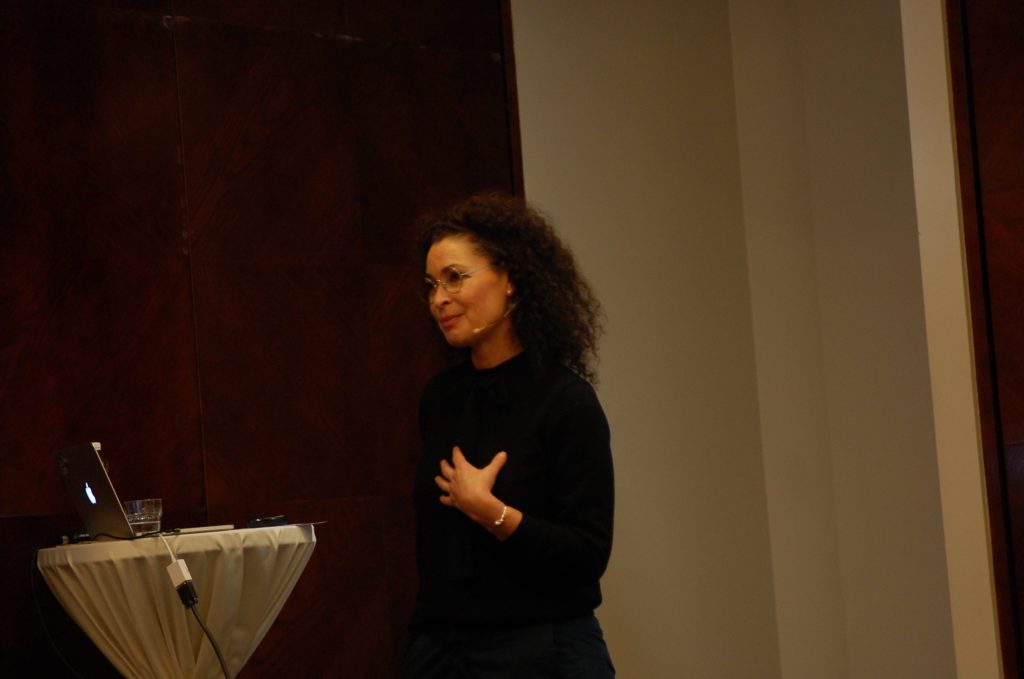Following the signing of the Estonian Diversity Charter by Telia Eesti, Pipedrive, Your Brand Up Studio, Loomus and Apek Digital, marketing expert Gabriella Wiiala held a presentation introducing her 9-step approach to benefitting from diversity in communication.
Gabriella Wiiala is in charge of the Swedish Diversity Charter as well as the business branch of the creative agency Spoon. In her presentation, she elaborated on the ways to plan a company’s communication so that diversity and inclusion would provide an advantage and improve profits.

The role models for diversity
Over 70% of the people in Swedish news media are men and only 9% of them are of different ethnic background. The least diversity is to be found in the sections of economy and sports, where 75% is made up by middle-aged men and the percentage of young people is close to nonexistent. The most balanced seems to be the culture section.
This kind of one-sided picture creates an understanding for many that certain fields are not for them. The gap between skills and expectations is especially big among youth, and for organisations this means lost resource and talents, who no one knows to be on the lookout for. One could say that in communication, message is key, but sometimes it can all be about role models.
As Spoon acts as a consultant also in the field on innovation, they themselves need to be the role model for diversity. The business group’s most profitable office is situated in Helsinki, where 4 different nationalities are represented among the 11 people working there. This means they have been able to create a collective which does not consist only of “the usual suspects” and which is more capable of producing fresh ideas.
All this led Spoon to an understanding that communication itself should put an emphasis on the possibilities for people from all different corners of Earth to come and work in communication.
They went on to offer internships to teenagers who were guided by mentors, and work with youth from complicated backgrounds. A person who believes in endless possibilities, is more willing to contribute to the society.
The 9 steps
Gabriella presented 9 steps for breaking out of the usual pattern and changing society with diverse communication.
- Count the heads! People who are represented in you communication, create the world for other people. It is up to you how this world looks like. Who is visible, who isn’t? What is not visible in your communication also sends a message about your organisation.
- Come up with a plan and stick to it! It’s easy to make plans and more easier to forget them, following the usual, habitual path. Work in teams in a way that everybody knows the common strategy. Make up lists about interesting people.
- Dare to fight! Ideas always compete with each other. You don’t have to follow the easiest way, because it’s not always the best. Standing up for your ideas requires patience. There will always be people with a higher ranking, and it is comfortable to accept other’s proposals. The ideas you protect and the people you include, tell a story of their own.
- Find new experts! You should be curious in order to find new and interesting experts. The new expert may not be a good speaker, or may be timid in presenting their ideas. Don’t be afraid to invest time and hard work into helping them. Guide, train, take them together with media people. It will pay off in the future. Patience and more patience!
- Proactively keep your eye on smart people! It doesn’t mean you have to hire them right away – just try to meet with them regularly, invite them to seminars, do something together. This has an effect on you organisation and helps to create a contact more quickly in the future.
- Sow your seeds in time! Include young people, use mentors, it will give back momentarily, but also in the longer perspective.
- Avoid traps! Think about how we portray women and men on photos? Aren’t you tangled in the web of stereotypes, which makes you message obsolete? Or will the portryals bust myths and address new people?
- Develop networks! It is necessary to be part of networks that add something new to your experience. Which kind of audiences could you attract in the future? By only sitting at you office, you will never know!
- Not only men vs women! Look for people with different backgrounds and experiences. A different education is also an advantage, because it means different thinking patterns.
And finally – the hardest part! The hardest part is to understand, what to change and in which direction to move. It is better to take one step right away than to try to follow all of the 9 steps at the same time. So – get moving!
See also the video of the presentation.
Since you are here...
It is important to protect everyone’s human rights, because it helps to keep stability and peace in the society. There are many challenges for protection of human rights in Estonia: intolerance has really come out of the closet. Bad things happen when good people are too passive, but together we can make a change.
Estonian Human Rights Centre is the competent, accountable and impactful independent human rights organisation in Estonia. Your recurring or one-time donation helps to stand up for human rights everywhere: in courts, in the media, in schools, in the workplace, on the streets and in governmental venues.
Donating is easy, and you can use your credit card if donating from abroad.
Donate now